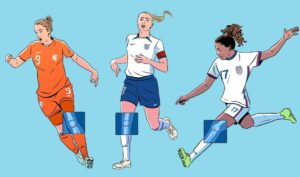The Curse Stalking Women’s Soccer
Originally Published by Rory Smith for The New York Times
The third time around, Megan Rapinoe’s reaction to a potentially career-ending knee injury went no further than an eye roll. She had torn her anterior cruciate ligament. She could reel off the recovery schedule from the top of her head. She could see, crystal clear, the next nine to 12 months spooling out in front of her.
The surgery, the painstaking rehab, the grueling weeks in the gym, the anxious first steps on the turf, the slow journey back to what she had once been. As she considered it in 2015, she felt something closer to exasperation than to despair. “I was like, ‘I don’t have time for this,’” she said.
The first time had been different. She had torn the anterior cruciate ligament in her left knee at age 21, when she was a breakout star in her sophomore year at the University of Portland. At that time, she felt what she called “the fear” — the worry that it might all be over before it had begun.
A year later, she had done it again: same ligament, same knee, same arduous road back. It did not stop her from doing all that she had dreamed of doing. She turned pro. She was named to an all-star team. She represented her country. She won a gold medal at the Olympics. She moved to France. She played in two World Cups. She won one of them.
And then, during a training session in Hawaii in December 2015, months after her 30th birthday, it happened again. This time, it was the right knee, and this time, her reaction was different. “It changed for me as I got older,” she said. “That one was like an eye roll. ‘This is annoying. I know what it is going to take to come back’. But generally, I think there’s this fear. Is this going to be the end? Am I going to come back from this? Am I going to have pain forever?”
Over the last year or so, that fear — and the searching questions it prompts — has coursed through women’s soccer. The sport has at times seemed to be in the grip of an epidemic of A.C.L. injuries, one so widespread that at one point it had sidelined a quarter of the nominees for last year’s Ballon d’Or.
Alexia Putellas, the Spain midfielder who won that award and the consensus pick as the best player of her generation, has recovered in time to grace the World Cup, the sport’s showpiece event. But countless other stars have not. They will, instead, spend their summer at home, nursing their injuries, cursing their luck.
